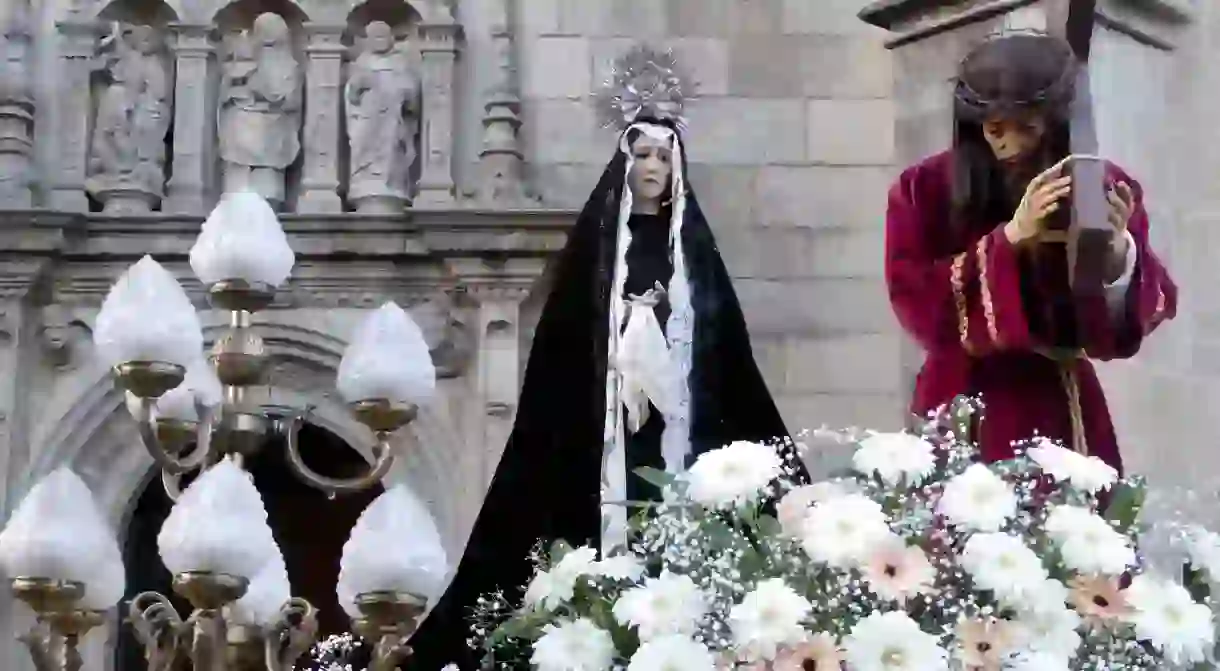Easter Traditions and Customs You Should Know About in Spain

Easter time in Spain can be very different from how you might be used to celebrating it at home. There are no Easter egg hunts or giant bunnies – and not much chocolate either. Here, it’s more about the religious side of the festival, filled with masses, processions and religious floats. Here are 11 Easter traditions and customs you should know about in Spain.
Did you know – Culture Trip now does bookable, small-group trips? Pick from authentic, immersive Epic Trips, compact and action-packed Mini Trips and sparkling, expansive Sailing Trips.
Semana Santa
The Easter period in Spain is known as Semana Santa, or Holy Week, and events in many cities around the country really do last a whole week. Here it’s not just about Easter Sunday – there are many other traditions leading up to the day, which are perhaps even more important. Many Spanish also take this week as holiday, either to go back home and visit family or visit someplace new. You’ll also find that many smaller, family businesses are closed during this week.
Religious processions
The religious processions are the main part of Semana Santa. These go on all week and consist of many people parading through the streets in colourful costumes, carrying huge floats, and mourning the death of Christ. Brass bands and drummers are also in accompaniment. Some of the best and most elaborate religious processions can be seen in the Andalusian cities of Seville and Granada, as well as further north in the Castilla y León cities of Zamora, Salamanca and Valladolid.
Floats
The floats are an important part of the religious process. They are huge, intricate and elaborate pieces of artwork, which feature statues of the Virgin Mary, Jesus on the cross and important events such as The Last Supper. During many of the processions, the floats are carried on the heads of men and women who hide underneath them.
Religious brotherhoods
During the parades you’ll see many religious brotherhoods, dressed in colourful silky costumes with pointed hoods, covering their heads and faces. The costumes of these religious brotherhoods may remind visitors of certain groups, which were around in the southern United States, particularly during the 1950s and 60s, but there’s nothing sinister about these costumes – they are simply historic and symbolise the brotherhoods they represent.
Mourners
Another part of the processions are the mourners. Dressed all in black, they are usually women, wearing lacy veils and carrying candles. They symbolise the mourning of the death of Christ and usually follow the brotherhoods and floats.
Candles and balls of wax
Candles are a typical part of these religious processions, whether they take place in the day or night, and are often carried by the mourners and the brotherhoods. Children, particularly in Andalusian cities, have competitions between themselves during this time to see who can make the biggest ball of wax. Every so often the processions come to a standstill so that the people carrying the floats can rest or change over, and when they do, children will bend down underneath the candles to collect the hot dripping wax and add it to their ball.
Family meals
Easter Sunday in Spain is all about going to mass and staying home with family. It’s a similar time to Christmas in that families often travel home for Easter, and a big meal is cooked and eaten together with family. A typical Easter Sunday dinner may consist of garlic soup (sopa de ajo) with a baked egg in the middle, or seafood.
Torrijas
Forget chocolate Easter eggs, the Spanish have their own Easter treats. Similar to French toast, torrijas are typically eaten around Easter time. They consist of bread, dipped in milk and egg, then fried, before being sprinkled in sugar and drenched in honey. Some of them also have a burnt sugar layer on the top, similar to a crème brûlée. Some of the best torrijas can be found in the Basque Country.
Pestiños
Another Easter treat are pestiños, which are like crunchy, deep fried fritters, flavoured with anise and orange and glazed with sugar or honey. You’ll mostly find them in the southern Spanish region of Andalusia.
Monas de Pascua
Easter cakes, or Monas de Pascua, are typically found in the Catalunya and Valencia regions. Traditionally they consist of sweet bread rings with whole eggs baked into the top and sprinkled with candied pieces of fruit and sugar. More modern versions of this cake can also be found, filled with cream, covered in chocolate, and topped with chicks and chocolate Easter eggs.
Bueñelos
Bueñelos are like small doughnuts, although they are irregular in shape and have no hole in the middle. They are deep fried and are usually sprinkled with sugar. Valencia is a great place to try bueñelos – here they make them with pumpkin.













